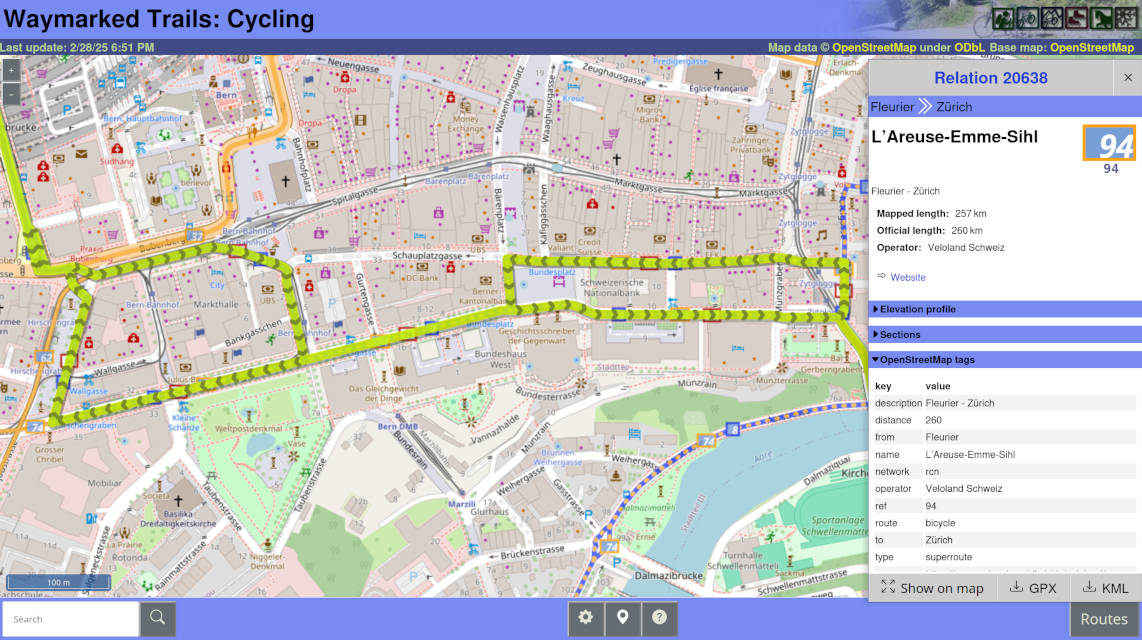I’ve just rolled out some updates for waymarkedtrails, the website for browsing route relations. The most notable improvement is that waymarkedtrails is finally able to understand member roles in route relations. This post gives a quick overview of what works and what doesn’t and what has changed with in the route views.
Forward/backward roles
The first group of roles handled specially are forward and backward roles which indicate that the route follows the given way only in the direction of the way or in counterflow. These oneway sections are now shown when details of a route are displayed:

Waymarkedtrails will internally merge forward and backward sections into split sections and count them only once when computing the length of the route. However, this only works, when all ways of such a spilt section appear together in the relation and follow the order of the route. (See also the notes on ordering below.)







